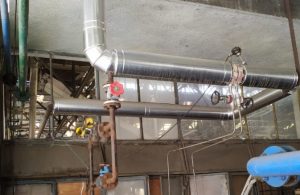Steam Flow Energy Measurement
Due to its inherent fluid properties and practical application, particularly across an extensive variety of flow rates, steam is very challenging to measure. For plant efficiency, energy efficiency, process control, and cost objectives, steam users are required to measure steam flow. Nowadays, many industrial and commercial businesses use energy cost accounting, energy conservation, monitoring, and targeted tactics. These devices enable you to reduce your electricity costs. A wide range of flowmeters made to measure the flow of different liquids and gases, including steam, are currently on the market. Few devices have been developed specifically for measuring steam flow.
Why measure steam?

A steam flowmeter is an essential device to maintaining proper steam sanitation. It offers you with the information required to operate a building or a factory efficiently, such as how much steam is consumed and how much it costs. The main benefits of using steam flow metering are as follows:
- Productivity of the plant: A good steam flowmeter will display the steam flow rate to a plant item over the span of the item's complete operational range. The steam flow meter is additionally employed to track steam demand, identify steam peak usage, and identify the plant components that employ the most steam. It is feasible to modify industrial processes using a steam flow meter to reduce the amount of steam used.
- Efficiency in terms of energy use - Steam flowmeters can be used to compare the performance of various plant components and to monitor the development of energy-saving measures.
- Controlling the process: The output signal from a steam flow metering system can be used to regulate the quantity of steam supplied to a process and show whether it is operating at the right pressure and temperature.
- Custody and costing: Steam can be costed as a raw material at different stages of the production process, allowing the real cost of each product line to be ascertained.
Uses of steam flow meter-
One of the crucial forms of steam flow meters is the differential pressure flow meter. Differential pressure flowmeters rely on pressure variations that occur when steam flows through a venturi, nozzle, or other opening. It is possible to determine the flow rate using the pressure difference's indication of flow velocity. It can be employed in the following ways:
- A steam flow meter can be used to measure the mass flow rates of boiler feed water in closed conduits as well as the flow rates of saturated and superheated steam.
- For pressures up to 30bar, it is used to monitor the flow of saturated (100°C to 300°C) and super-heated (300°C to 600°C) steam in closed conduits.
- Thermic fluids and thermic oils, among other fluids, can be utilized as the heat transfer medium, and it can be used as a heat energy transfer meter to measure thermal energy utilizing these fluids.






Comments
Post a Comment